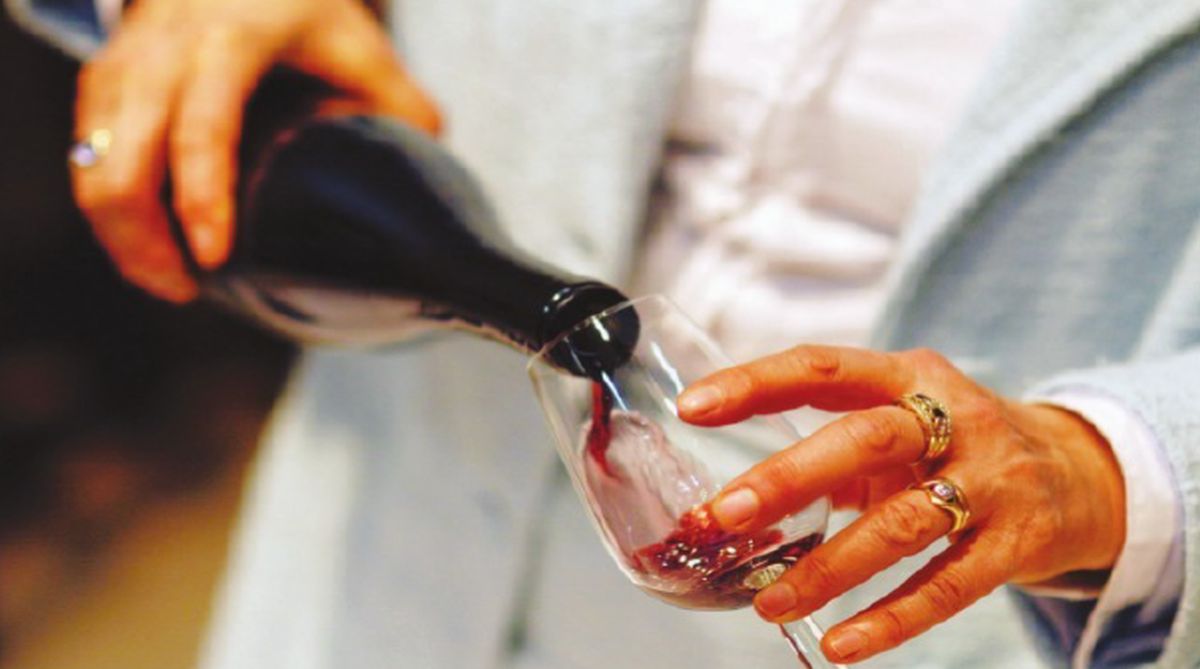Fine wines are delicately balanced arrangements of a great variety of constituents —that is the reason why particular grape and specific regions are known for quality wines. Disturbing the proportions in what makes up the wine can damage its flavour and bouquet.
Chen Liang, Renata Ristic, Vladimir Jiranek, and David W Jeffery, from the University of Adelaide, Glen Osmond, Australia write, in the Journal of Agricultural and Food Chemistry, of an innovative method to clean wine of unwanted constituents that have got in because of harvesting the grapes too early or if the climate was too cool. The technique first uses nanometre-scale agents that bind to target molecules and then a way to pull these agents out, along with the offending molecules, without bleeding the wine of other good things.
Fermentation of the sugar in fruit gives rise, apart from alcohol, to many other substances. Quality wine arises because the fruit started out with the correct mix of sugars and other substances, the yeast used gave rise to the correct mix of alcohols and other things, like esters, aldehydes, different aromatic and volatile substances, the right level of acid, tannin and such “congeners” as they are called. The quality of soil where the vines are grown; the climate while the grapes ripen, and then the conditions during fermentation and maturation affect the final product.
Once basics, like the strain of grape and yeast, and the conditions of cultivation are assured, the wine makers’ craft is able to take care of uncertainties and compensate for minor variations. For instance, if there has been unusual weather or the grape juice, halfway through fermentation, shows a higher level of acid, vintners have methods of compensation and controlling the course of fermentation.
Even after the wine is ready, some wines can be blended to correct deficiencies. There is even a practice of planting a mix of strains of vines, so that one kind of variation in one strain can be offset by the opposite variation in another. These measures, however, are surface-level adjustments that remedy bulk qualities of the wine, so long as the basic constituents are there in largely correct proportions.
If there are basic deficiencies, like when the strain of grape is not suited for wine, or beer yeast has been used for making wine, it develops deficiencies that cannot be managed. The reason for this is that the number of factors and substances that give wine its final quality cannot even be assessed and attempts to correct some factors affects other factors and results in no improvement. This is also the reason that there can be no such thing as synthetic wine — only nature has been able to create conditions in specific regions of the world and then, comes traditional wine-making methods.
On the other hand, there are, at times, problems with wine that do have a largely specific cause. If such causes can be identified, there could be ways of eliminating them, but many methods cannot be used, generally because they may interfere with other constituents of the wine.
The team at the University of Adelaide considers a category like this, of substances known as MPs (alkylmetoxypyrazines), which “impart vegetative and herbaceous aroma nuances to wines.” These are important trace constituents of popular grape varieties, like Sauvignon Blanc and Cabernet Sauvignon, the paper says. But if the wine has too much of MPs, they can suppress the “fruity and floral aroma bouquets” and even contribute their own unpleasant “off flavours”.
This problem with MPs is often faced, the paper says, when grapes are harvested before they are fully ripe, so as to make low alcohol wines, or when the grapes have ripened at lower temperatures. As for dealing with elevated MP levels, the paper says, possible methods are warming the grape juice or additives. Warming does reduce MPs but it induces undesirable aromas. And additives, like bentonite, oak chips, deodorised oak chips and activated charcoal, are either not effective or they remove other congeners along the MPs.
The team then investigated the use of synthetic, polymer (chain structure) molecules, which can have a made-to-order molecular structure, so called molecularly imprinted polymers. These polymers can be designed to attach themselves to specific surface features of other, known molecules.
As this action is like the antibodies of the animal immune systems, which neutralise pathogens by forming “lock and key” fits with the intruder’s cell envelope, these polymers are also known as “plastic antibodies”. They have been widely used in analytical and biochemical applications where selective binding to particular molecules is called for, the paper says.
Nano-size polymer particles were generated, with the help of an MPtemplate molecule, so that the particles could form bonds with MPs if brought into contact with them. Along with imparting this structure to the polymers, they were also treated with iron oxide particles that could connect to the polymer chain.
The result was nano-particles that would attach to MP molecules and had a component that could respond to a magnetic field. The polymer particles, attached to MP molecules, could then be drawn out the wine medium with the help of a magnetic field and this would not affect any other molecule in the wine. The team spiked Cabernet Sauvignon grape juice, both before and after fermentation, with a potent MP that is found in grapes and wines.
The juice was then treated with magnetic molecularly imprinted polymers, and with controls of magnetic but non-imprinted polymers and the polymer polylactic acid, which has MP clearing potential. The result, the paper says, was that the magnetic and imprinted polymer had powerful MP cleaning effect, down to the threshold of detection by the senses. The treatment had a significant effect on other volatile compounds too, the paper says, but did not decrease the overall aroma or fruity character of the wine.
The writer can be contacted at response@simplescience.in











